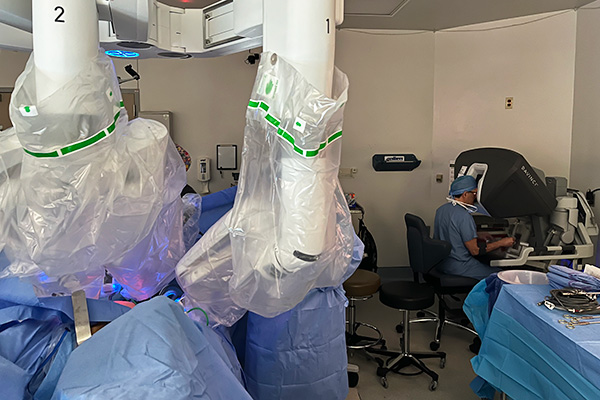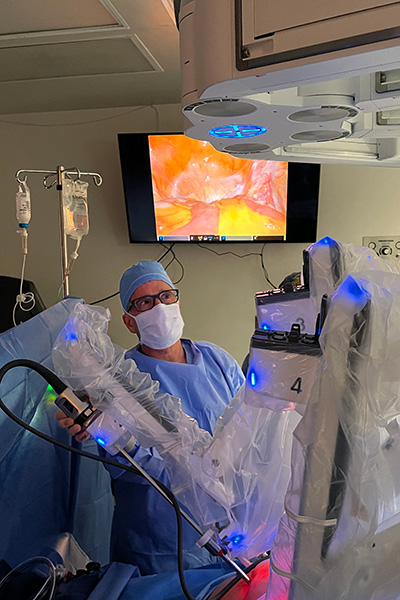One of the most common questions we get from patients who are scheduled for a surgery using the da Vinci robot is, “How does a robotic surgery work?” While you might hear “robotic surgery” and imagine an artificially intelligent robot doctor, the robotic apparatus is actually an extension of the surgeon’s hands and is controlled by them at all times. During the procedure, the surgeon sits at a control console where they are able to see a magnified 3D image of the surgical site. They have handpieces and foot pedals to operate the camera and instruments to perform the procedure. A surgical assistant is present at the patient’s bedside who can change out the instruments being used and assist with the procedure through a surgical port.
What Is The da Vinci Robot?
Da Vinci robotic surgery is minimally invasive and a major improvement on traditional laparoscopy. With the da Vinci system, five incisions approximately 1 cm long are made on the patient’s abdomen, which allow a camera and four small instruments to enter. Gas flows into the abdomen throughout the procedure, keeping the abdomen slightly expanded and providing visibility of the surgical site. Compared to open surgical procedures, the smaller incisions and smaller instruments typically result in substantially less post-operative pain and quicker recovery time.
Patient Testimonial: Da Vinci Sacrocolpoperineopexy, Hysterectomy, Mid-Urethral Sling
Dr. Shashoua and his staff exceeded my expectations! At all of my appointments, his staff was prompt, professional, courteous, and kind. Dr. Shashoua performed a da Vinci sacrocolpoperineopexy and midurethral sling and I am very happy with the results. Not only is he skilled, but also kind and compassionate. I want to especially thank Nurse Practitioner Julianna for taking such good care of me during my hospital stay. As a nurse, I researched urogynecologists who perform sacrocolpoperineopexy and even though I had to travel 6 hours one way to see him, he did not disappoint.
-Virginia G.
Treatments That Use The da Vinci Robot
Vaginal Prolapse Repairda Vinci Robotic Sacrolcopopexy
Mesh-Free Robotic Colpopexy
Got questions? Need an appointment? We’re here to help!


